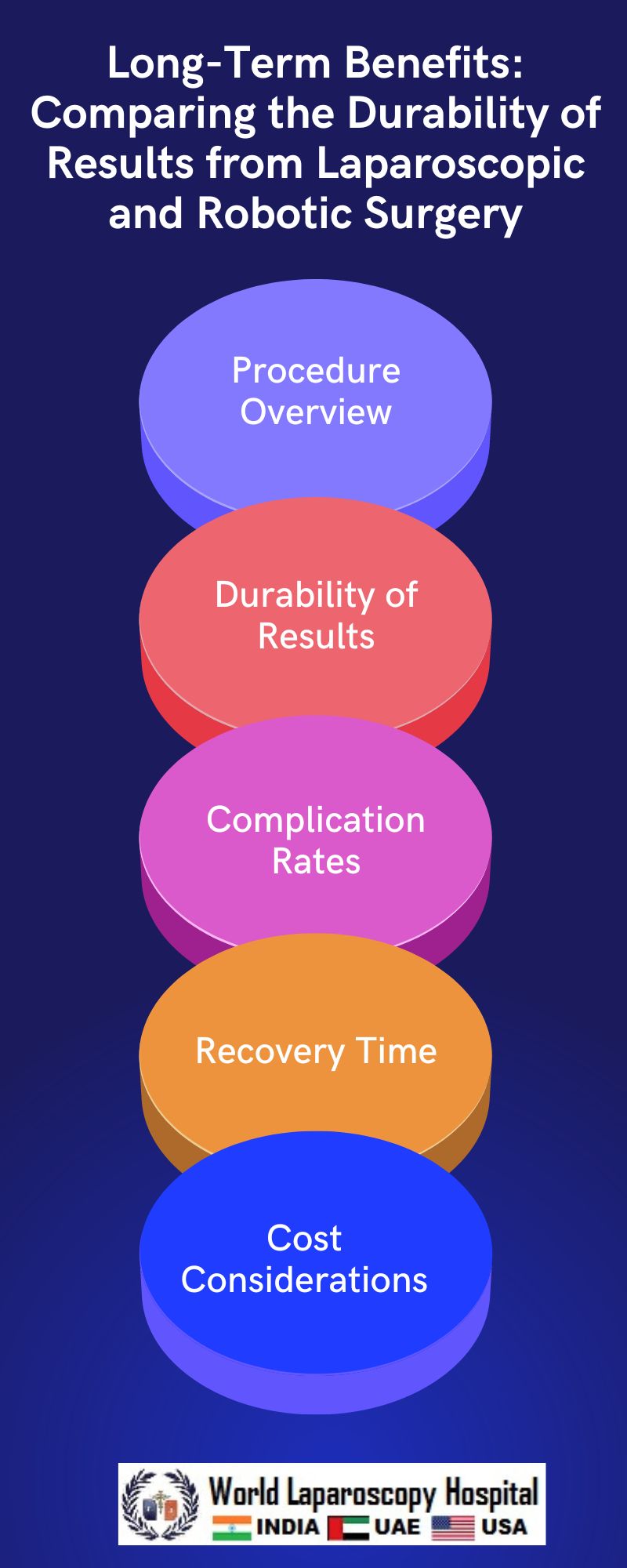Long-Term Benefits: Comparing the Durability of Results from Laparoscopic and Robotic Surgery
Introduction:
Surgery has evolved significantly over the past few decades, with laparoscopic and robotic surgeries emerging as minimally invasive techniques that offer numerous benefits over traditional open surgeries. These techniques are known for their shorter recovery times, reduced pain, and lower risk of complications. However, one aspect that is often overlooked is the long-term durability of results from these surgeries. In this article, we will compare the durability of results from laparoscopic and robotic surgeries, focusing on various factors such as recurrence rates, patient satisfaction, and quality of life outcomes.

Laparoscopic Surgery:
Laparoscopic surgery, also known as minimally invasive surgery, involves making small incisions in the abdomen through which a camera and surgical instruments are inserted. This technique allows surgeons to perform complex procedures with precision and minimal trauma to surrounding tissues. Laparoscopic surgery has been widely used for various procedures, including cholecystectomy, appendectomy, and hernia repair.
One of the key advantages of laparoscopic surgery is its lower complication rates compared to open surgery. Studies have shown that patients undergoing laparoscopic procedures experience fewer postoperative complications, such as infections and wound-related issues. Additionally, laparoscopic surgery is associated with shorter hospital stays and quicker return to normal activities, making it an attractive option for many patients.
Robotic Surgery:
Robotic surgery is a more recent advancement in minimally invasive surgery that uses a robotic system to assist surgeons in performing procedures. The robotic system consists of a console where the surgeon sits and controls the robotic arms, which are equipped with surgical instruments. Robotic surgery offers several advantages over laparoscopic surgery, including enhanced dexterity and precision, as well as improved visualization of the surgical site.
Like laparoscopic surgery, robotic surgery is associated with shorter hospital stays and faster recovery times. However, robotic surgery is often more expensive than laparoscopic surgery, which can be a limiting factor for some patients. Additionally, there is some debate over whether robotic surgery offers significant advantages over laparoscopic surgery in terms of long-term outcomes.
Comparing Long-Term Durability:
When comparing the long-term durability of results from laparoscopic and robotic surgeries, several factors need to be considered. One important factor is the recurrence rates of the underlying condition being treated. For example, in the case of cholecystectomy for gallstones, studies have shown that the recurrence rates are similar between laparoscopic and open surgeries, suggesting that the minimally invasive approach does not compromise long-term outcomes.
Another important factor is patient satisfaction and quality of life outcomes. While both laparoscopic and robotic surgeries are associated with high patient satisfaction rates, some studies have suggested that patients who undergo robotic surgery may experience better quality of life outcomes, such as less pain and faster recovery times. However, more research is needed to fully understand the impact of these factors on long-term durability.
Conclusion:
In conclusion, both laparoscopic and robotic surgeries offer significant benefits over traditional open surgery in terms of shorter recovery times, reduced pain, and lower complication rates. When comparing the long-term durability of results, there is currently limited evidence to suggest that one technique is superior to the other. However, robotic surgery may offer some advantages in terms of enhanced dexterity and precision, which could potentially translate into better long-term outcomes. Further research is needed to fully assess the long-term durability of results from these surgeries and to identify the optimal approach for different types of procedures.